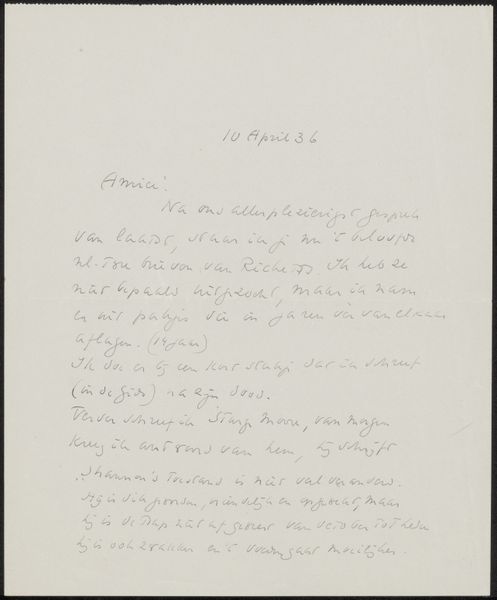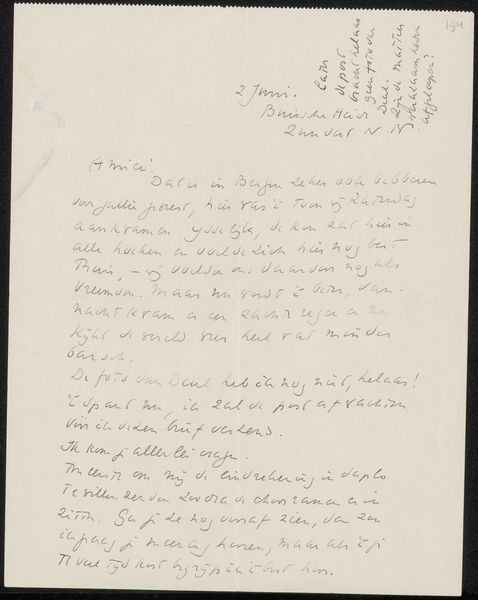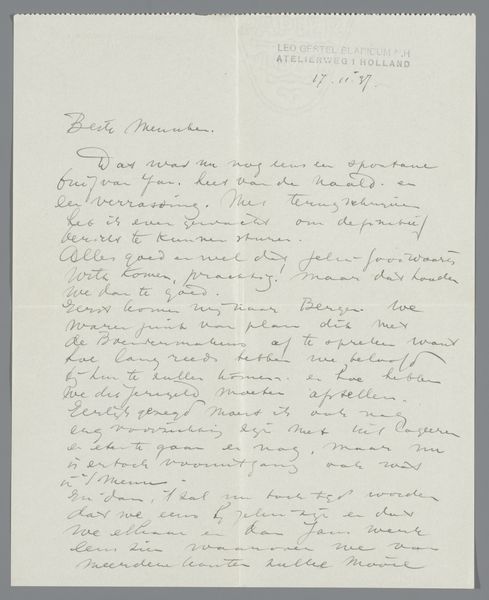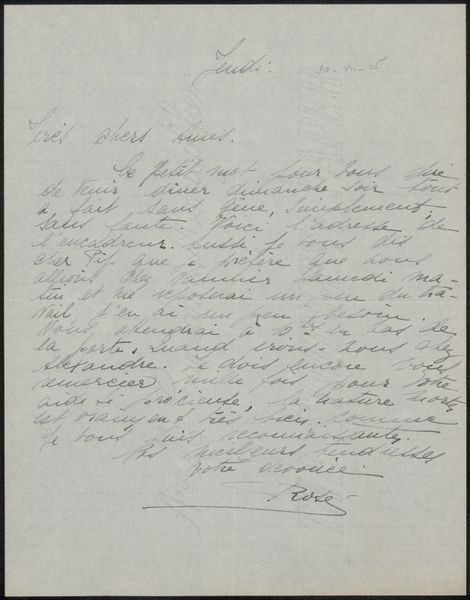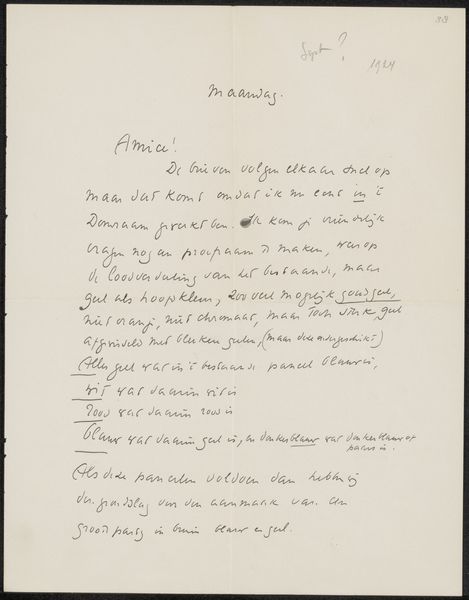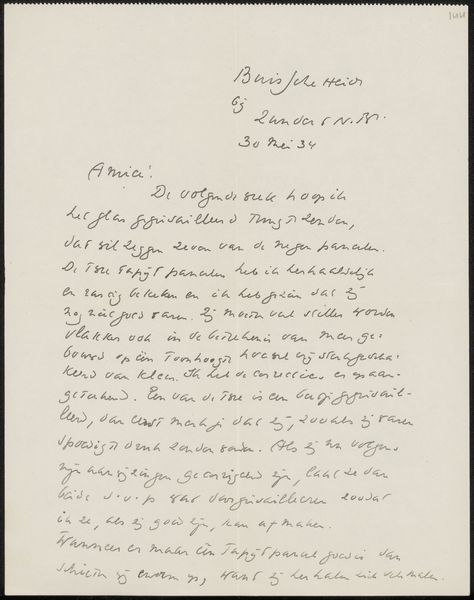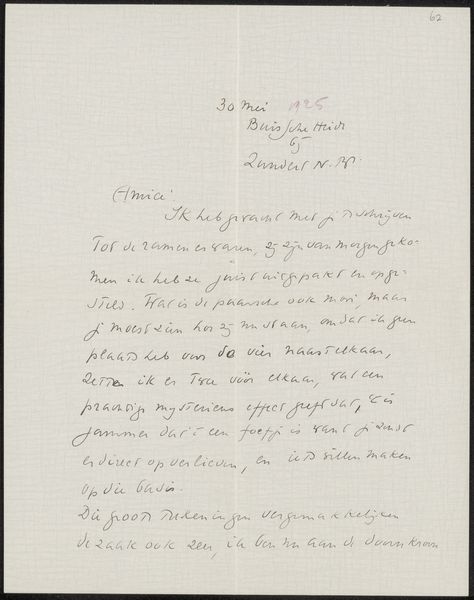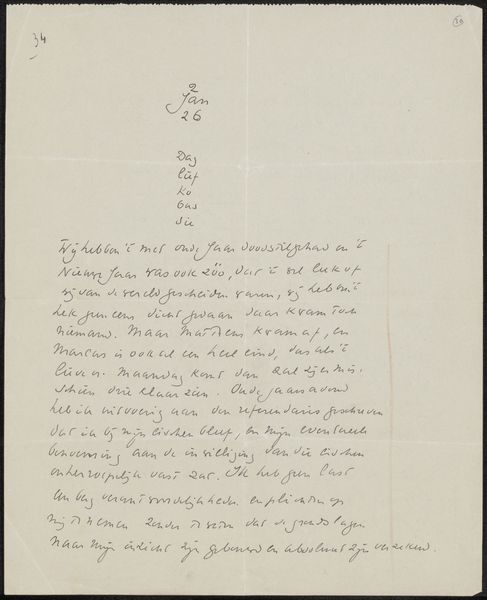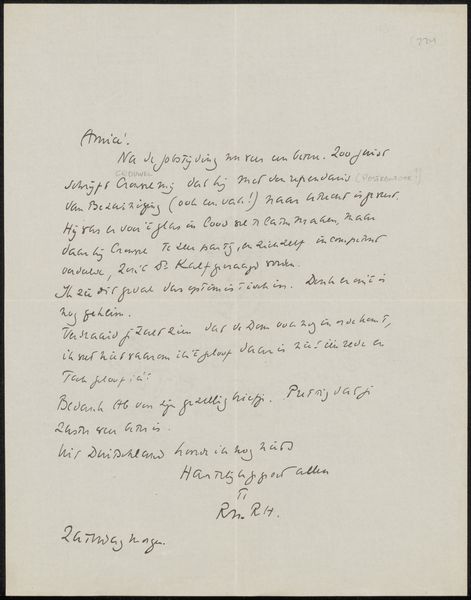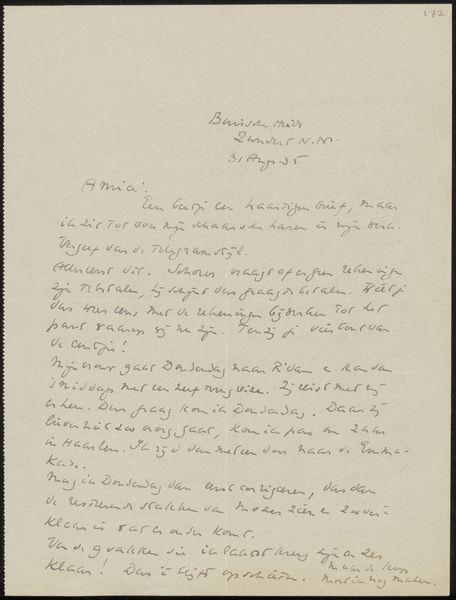
drawing, paper, ink, pen
#
drawing
#
hand-lettering
#
ink paper printed
#
old engraving style
#
hand drawn type
#
paper
#
personal sketchbook
#
ink
#
hand-drawn typeface
#
intimism
#
pen-ink sketch
#
ink colored
#
sketchbook drawing
#
pen
#
sketchbook art
Copyright: Rijks Museum: Open Domain
Curator: Here we have Richard Nicolaüs Roland Holst's "Brief aan Ina van Eibergen Santhagens-Waller," created around 1934 using ink on paper. My first impression is that the work has an unstudied and deeply personal quality. Editor: It feels quite intimate, almost as though we are intruding on a private moment between two individuals. I'm interested in the way the handwriting itself becomes a form of artistic expression. The slanted, almost rushed script seems to convey an urgency, or at least a genuine human element that cold print simply couldn't replicate. Curator: The formal qualities of the hand-lettering demonstrate an expert engagement with script as a design element. Note how each word’s shape contributes to the overall composition, turning the letter into an intricate tapestry of line and form. Roland Holst emphasizes not just readability, but visual harmony. Editor: I agree it’s visually appealing, but what elevates this from a mere exercise in penmanship is, to me, its implied social context. The letter gives the work historical weight, connecting the artistic practice with interpersonal connection during a critical time. Who were these individuals and what might their relationship signify within a broader cultural framework? Was Holst critiquing prevailing gender roles and societal values through subtle expression in such private notes? Curator: Intriguing thought! To my eye, it is simply an example of superb manipulation of line and void. The negative space surrounding the text becomes as crucial as the written marks themselves. The year indicated is '34, yes? Therefore, these formal relationships precede many mid-century investigations on the picture plane using a similar compositional approach. Editor: That may be so. However, to ignore how Intimism allowed turn-of-the-century artists to explore subjectivity and identity is short-sighted. Consider it not solely for how it appears, but rather for whom this resonated with, particularly within domestic settings or interpersonal relationships—specifically for Holst and Santhagens-Waller. Curator: Perhaps our understanding reflects what we seek in art. I’m drawn to the refined mechanics of construction while you explore resonance through social conditions. Editor: Indeed, we highlight divergent though complementary facets within the drawing. I depart considering it more a personal record intertwined deeply with cultural threads.
Comments
No comments
Be the first to comment and join the conversation on the ultimate creative platform.

